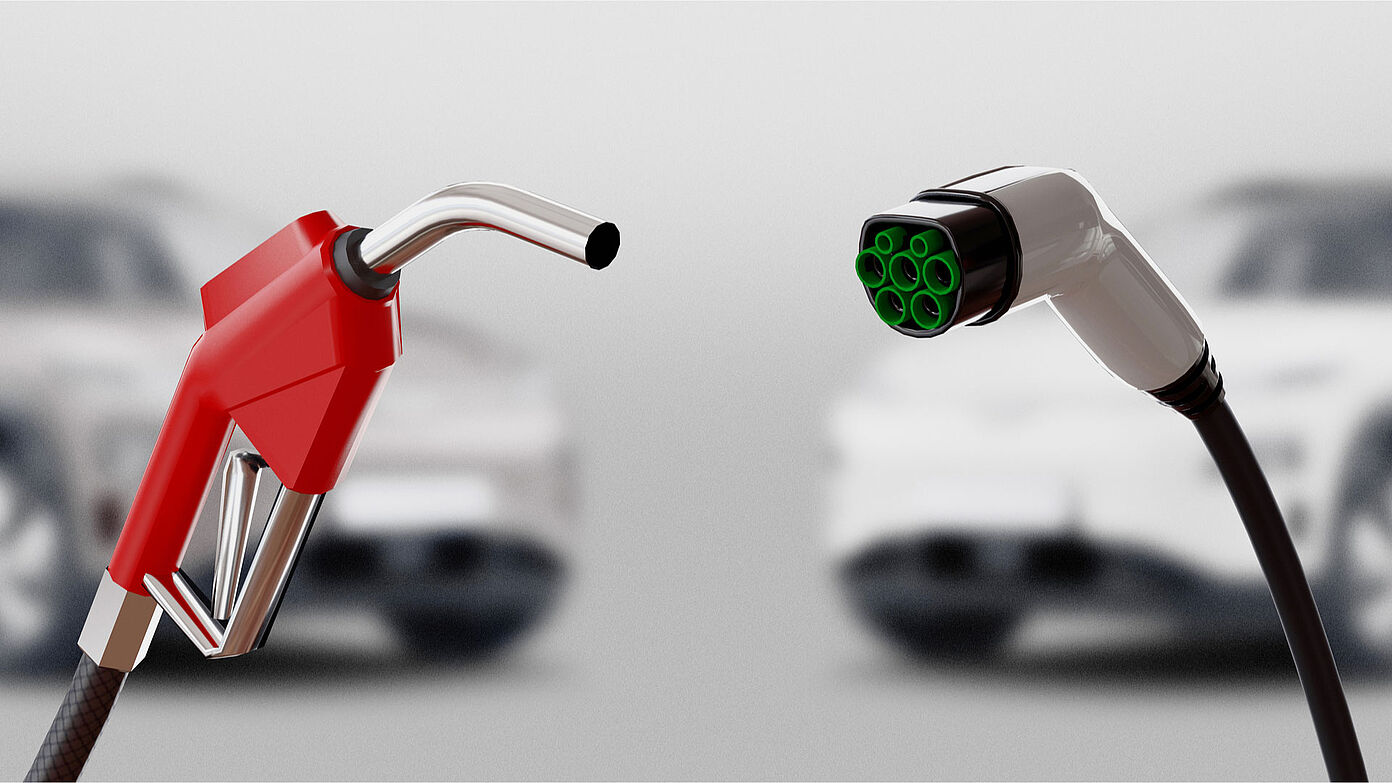Still refueling your car or already recharging it? And what role does Purchasing play in e-mobility?
Let me begin by speaking up for my colleagues in purchasing. They belong to one of the professional groups constantly confronted with change. New legislation and regulations are a constant and something new comes along daily. Purchasing is involved and has to consider numerous aspects, which can be challenging. This also applies to taking cars with internal combustion engines off the road beginning in 2035.

Shutterstock.com | ALDECA studio
While the public sector has been quiet about e-mobility, I can tell you from my experience that some implementation has already been in full swing behind the scenes. And many purchasing managers along with their teams have also been involved in this process. The upcoming e-mobility wave will admittedly turn a lot of things upside down, especially in the automotive industry. We will all be affected as car drivers, designers, development engineers, buyers, gas station leaseholders, and many more roles. Keywords that keep coming up in this connection are “sustainability” and “standardization.”
Why change your thinking now?
The trigger for why we all have to rethink is the historic decision to eliminate internal combustion engines in the EU starting in 2035. This is an enormous step, considering how many of them are currently still on the road. Whether this goal can be achieved with the added challenges of the energy crisis is still up in the air. Nevertheless, the fact is that the EU Parliament even voted to ban new cars emitting CO2 as of 2030. In Germany, Environmental Minister Steffi Lemke already made it an official issue. On behalf of the German government, she announced in Brussels last March that she was behind on the goal of phasing out internal combustion engines in cars and vans by 2035. With this decision, however, the negative rhetoric has become much louder again.
And that’s not gonna get us very far…
When we speak with colleagues, business partners, customers or others about e-mobility, everyone has their opinion and certainly one or two thought-terminating clichés ready: “The cars can’t drive long distances yet.” “There aren’t enough charging stations.” “E-vehicles are anything but green.” “The batteries are life-threatening in accidents,” and so on.
Nevertheless, the plans for the conversion to e-mobility have been in the drawer for a long time. At the Global Climate Change Conference in Glasgow back in November 2021, for example, several major automakers including Mercedes and Ford required a sales ban on internal combustion vehicles in leading markets beginning in 2035. That means manufacturers have been thinking about this for a long time and can counter some of these thought-terminating clichés. “Insufficient range” is widely regarded as the knockout argument as e-cars used to be pure city vehicles. Yet the trend is changing. The ranges are getting wider and are already approaching and even exceeding those of a gasoline or diesel engine. Some good comparisons of e-car ranges dating back to 2021 are available, for example on https://www.evara.com/. There you can look for yourself and browse the statistics on this.
So where should I charge my car?
Another thought-terminating cliché is that there are not enough charging stations. Admittedly, rural areas specifically still have some catching up to do, although the number of charging stations in public spaces continues to rise. For example, today almost every parking garage has several charging stations available. Just take a walk through the city with your eyes wide open and see that the number of charging stations has already increased. Data by Statista from July 2022 shows that there were 21,498 charging stations in Germany in the first quarter of 2021 and as many as 28,747 by the third quarter of 2022. The current trend is therefore pointing upwards.
E-cars only seem to be green
Many people criticize e-mobility for being green only for appearances. The important thing here is that we look at the entire life cycle of an e-car from production, maintenance, disposal, vehicle and battery recycling, energy consumption, and the effort required to supply it with electricity. In a study by the German Federal Ministry for the Environment, electric vehicles were compared to internal combustion engines and additional interesting facts were presented. According to the study, the greenhouse gas emissions of a compact-class e-vehicle today are lower than those of comparable gasoline-powered vehicles over their entire life span. However, the conclusion also shows that electric vehicles cannot be the only strategy to meet the goals of climate and environmental protection in terms of road transport.
Are you familiar with DAF?
Purchasing will face a lot of challenges in the coming months and years, along with some thought-terminating clichés. Please don’t let them convince you that new ideas or innovations on sustainability or other issues are impossible. Because of this, I recommend DAF [discreet acknowledgement formula] to everyone. If you would like to know more and how this method works in your Purchasing, then let’s talk on LinkedIn or in a personal appointment.
For more on this and other issues concerning sustainable purchasing strategies, listen to my podcast.